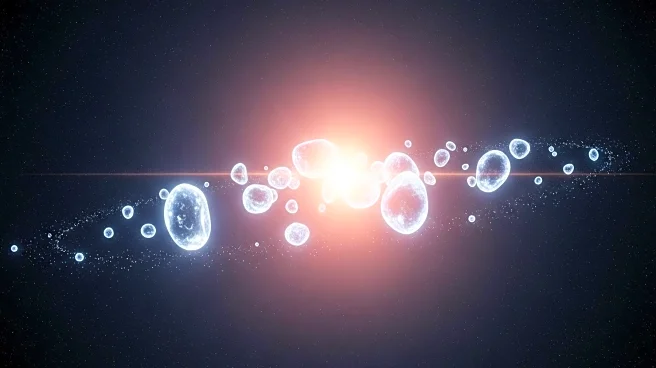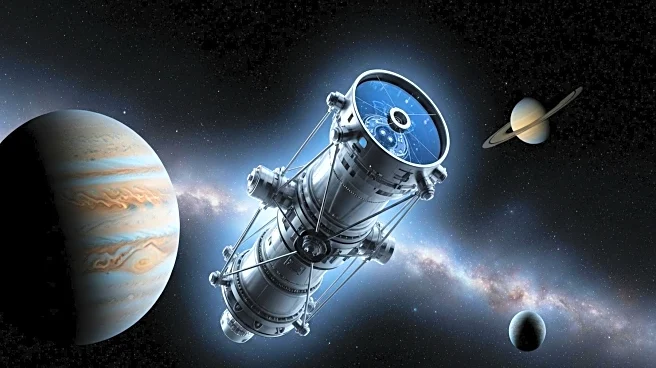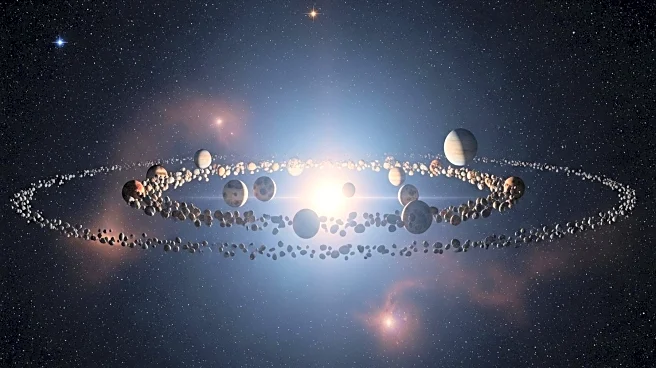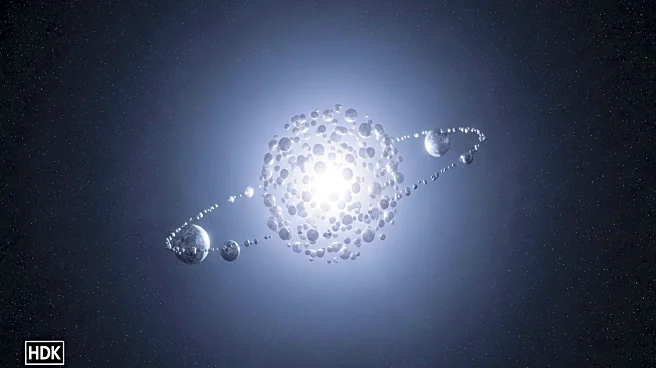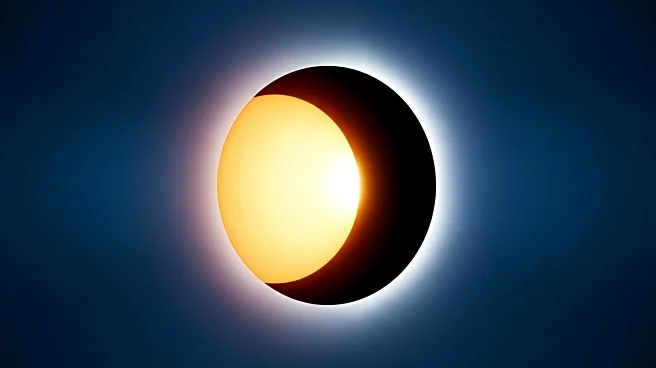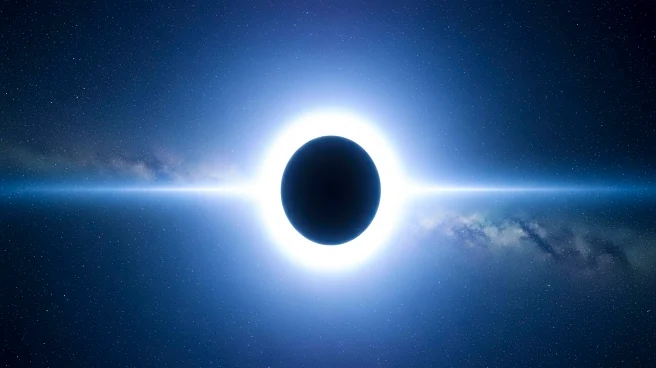What is the story about?
What's Happening?
Astronomers have identified the building blocks of planets, known as 'pebbles,' orbiting two young stars, DG Tau and HL Tau. These pebbles are small solid chunks that form in protoplanetary discs, which are rings of dust and gas surrounding young stars. Over millions of years, these pebbles can accumulate to form full-sized planets. The discovery was made using the UK's e-MERLIN radio telescope network, which detects radio waves emitted by these pebbles. This network consists of seven radio telescopes spread across the UK, connected by a high-speed optical fiber network. The findings reveal that these pebbles are present even in the outer regions of the discs, at distances similar to Neptune's orbit, suggesting that the materials necessary for planet formation are already in place.
Why It's Important?
This discovery is significant as it provides insight into the early stages of planet formation, a process that has largely remained hidden until now. Understanding how planets form can help scientists predict the prevalence of planetary systems similar to our own in the universe. The presence of pebbles in the outer regions of the discs suggests that planetary systems larger than our solar system could form, potentially with different types of planets. This research is part of the PEBBLeS project, which aims to understand where solid material gathers in these discs, offering a glimpse into one of the earliest stages of planet formation. The findings could lead to a better understanding of how common life-friendly planets might be in the galaxy.
What's Next?
The research team plans to continue their study with the upcoming Square Kilometre Array (SKA) telescope, which is under construction in South Africa and Australia. The SKA will have greater sensitivity and a wider observing range, allowing scientists to study hundreds of planetary systems across the galaxy. This will enable a deeper understanding of how planets are formed and whether systems like ours are common. The SKA is expected to begin science verification in 2031, providing an opportunity to explore the formation of planetary systems on a much larger scale.
Beyond the Headlines
The discovery of pebbles around young stars not only advances our understanding of planet formation but also raises questions about the potential for life in other parts of the galaxy. If planetary systems larger than our own can form, it could mean that planets with conditions suitable for life are more common than previously thought. This research also highlights the importance of radio telescopes in uncovering hidden stages of planetary evolution, offering a new perspective on the processes that shape our universe.
AI Generated Content
Do you find this article useful?
